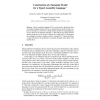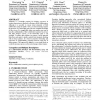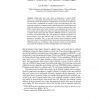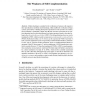220 search results - page 31 / 44 » Transition-Based Directed Model Checking |
VMCAI
2004
Springer
14 years 29 days ago
2004
Springer
Typed Assembly Languages (TALs) can be used to validate the safety of assembly-language programs. However, typing rules are usually trusted as axioms. In this paper, we show how to...
SIGSOFT
2006
ACM
14 years 8 months ago
2006
ACM
Atomicity is a desirable property for business processes to conduct transactions in Business-to-Business (B2B) collaboration. Although it is possible to reason about atomicity of ...
KI
2008
Springer
13 years 7 months ago
2008
Springer
Abstract. Modal logics see a wide variety of applications in artificial intelligence, e.g. in reasoning about knowledge, belief, uncertainty, agency, defaults, and relevance. From ...
SIGMOD
2009
ACM
14 years 7 months ago
2009
ACM
This paper presents SELinks, a programming language focused on building secure multi-tier web applications. SELinks provides a uniform programming model, in the style of LINQ and ...
STACS
1999
Springer
13 years 12 months ago
1999
Springer
Model checking is a method for the verification of systems with respect to their specifications. Symbolic model-checking, which enables the verification of large systems, procee...




